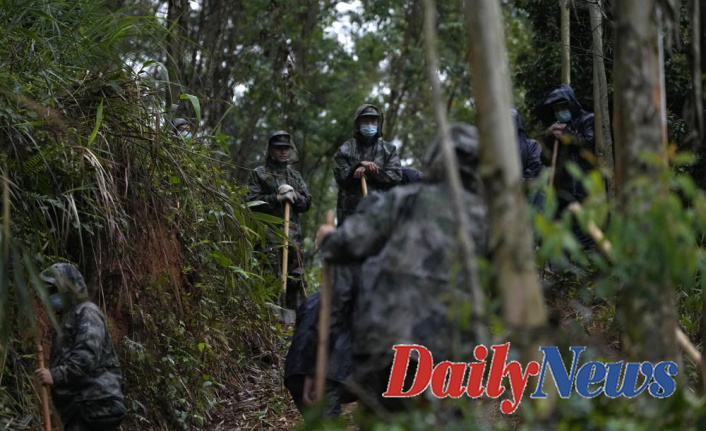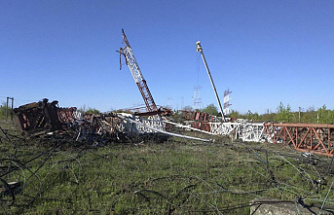Although no survivors were found after the China Eastern Airlines Boeing 737-8800 plunged into a mountainous area on Monday, during a domestic flight they were flying, authorities are still searching.
Officials said that they found human remains, engine parts, and items from the cockpit, along with some belongings to passengers. State TV showed searchers working on a slope to remove a section of the white wing with the airline's logo.
On Wednesday, one of the two black box recorders was discovered. It is believed to be the cockpit vocal recorder. Investigators found that the outer casing of the recorder was damaged, but the orange cylinder was still intact.
China Eastern, one China's four largest airlines, announced Thursday that the Shanghai-based carrier and its subsidiaries had grounded 223 Boeing 737-8800 aircraft as they investigate safety risks.
China Eastern stated earlier that the grounding of planes was an act of precaution and not a sign of anything wrong. According to the airline, the plane that crashed was in good shape and its crew were well-trained and healthy.
The plane crashed while flying from Kunming (the capital of Yunnan Province in China's mountainous southwest) to Guangzhou (a major city and hub for export manufacturing in the southeast). According to authorities, there were no foreign passengers on board.
Investigators say it is too soon to speculate on possible causes. Officials have stated that an air traffic controller attempted to contact the pilots multiple times after seeing the plane's altitude fall sharply, but received no response.
Although the names of the pilots have not been released by the government, news reports identified Yang Hongda as the captain. According to news reports Zhang Zheng was the co-pilot. He is a 30-year veteran who has logged 32,000 hours flying in his 30-year career.
Zhang's former colleague, an unidentified person, said that he was a mentor for young pilots and had a sunny disposition. He also captained the basketball team at the air academy.
According to news reports, Ni Gongtao was a second copilot who flew with them to gain more experience.
As light rain made it difficult to work on Thursday, pumps were used to drain the pit at the site of the crash site.
Zheng Xi (fire chief for the Guangxi) said that the rainstorm made the job more difficult. Zheng stated that muddy roads made it difficult to find the site, so some searchers carried tools and equipment.
Huang Shangwu (a deputy chief of fire) stated that more than 300 searchers participated in the event.
Huang said that yesterday's water pumping greatly contributed to the discovery of the black box. Huang spoke to reporters at a command centre near the crash site.
The Boeing 737-8800 was cruising at 29,000ft (8,800m) when it crashed. This fire can be seen in NASA satellite imagery.
The government tried to contain the information about the disaster by securing large areas around the crash site.
For the first time, foreign media were allowed to enter the zone Thursday. The highway was lined with police cars and other vehicles. Journalists were taken down narrow roads that were covered in red-brown dirt to reach the command center.
Security officers used open umbrellas to stop journalists filming from their vehicles from a woman who was in tears as they passed her.
To comb steep and heavily forested slopes, searchers used metal detectors, drones, sniffer dogs, and hand tools. The searchers have found wallets, bank cards, and human remains.
These "black boxes", which are usually painted orange to make them easy to find, are key to finding out the cause of the crash.
Cockpit voice recorders are able to capture voices, audio alerts, and background sounds from engine or switch movements. The flight data recorder records information about altitude, speed, direction, and pilot actions, as well the performance of important systems.












